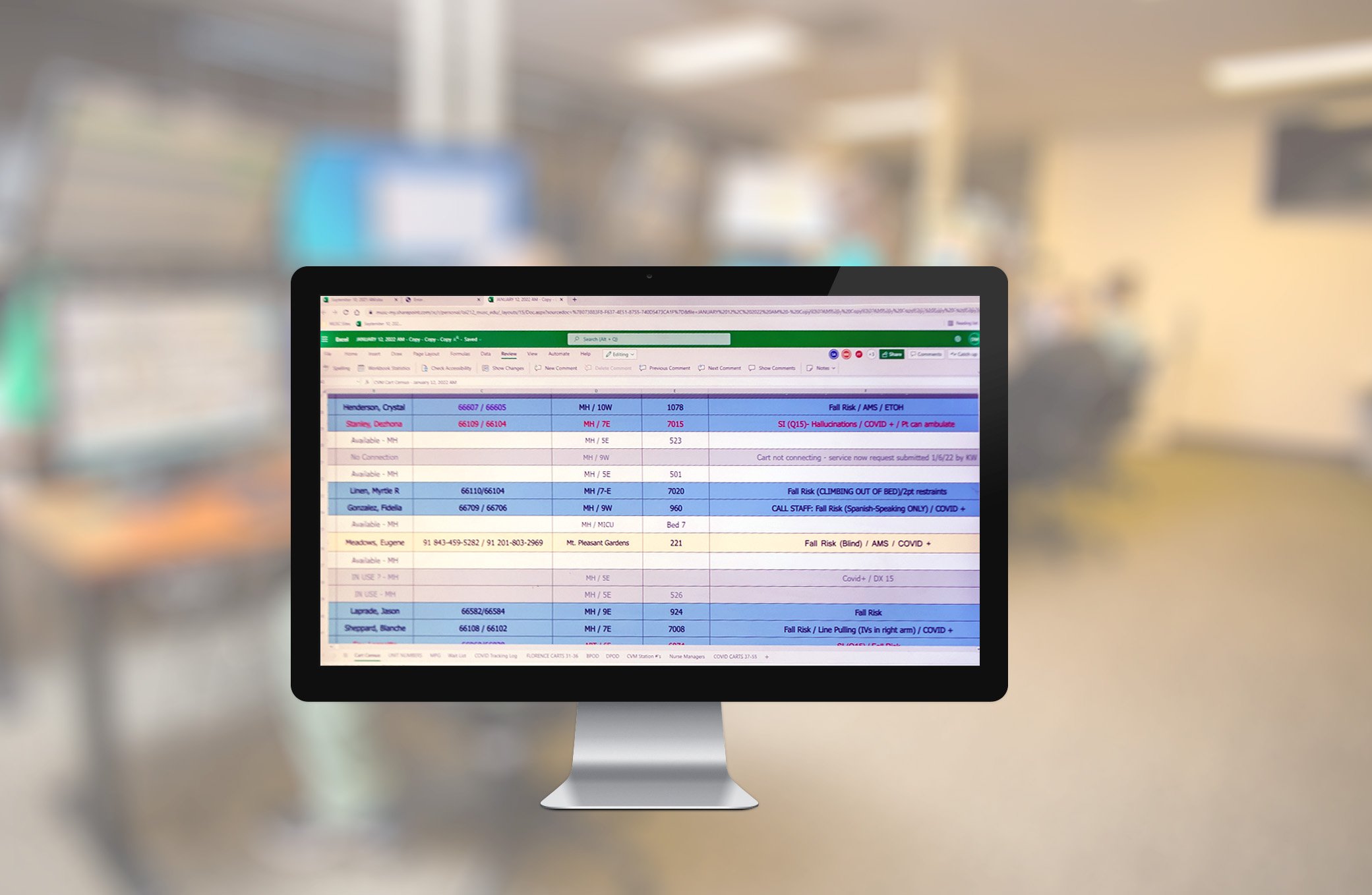User-Friendly Software for Remote Patient Monitoring: Easy Combination and Use
User-Friendly Software for Remote Patient Monitoring: Easy Combination and Use
Blog Article
The Future of Healthcare: Remote Individual Monitoring Simplified
As healthcare remains to advance, one area that holds immense assurance is remote person monitoring. The concept of simplifying this process with technical innovations is improving the way care is delivered and gotten. With an emphasis on improving person end results and streamlining healthcare delivery, remote tracking is poised to reinvent the market. By discovering the benefits, technical advancements, and future fads in this area, we can obtain beneficial understandings right into the transformative possibility of remote person surveillance.
Advantages of Remote Patient Surveillance
Remote person monitoring presents a wide variety of benefits for both doctor and individuals alike. One significant benefit is the capacity to constantly keep an eye on people' crucial signs and wellness information remotely. This real-time surveillance allows healthcare providers to identify any type of concerning adjustments or patterns quickly, bring about early treatments and potentially preventing medical emergencies. Additionally, remote patient monitoring improves the total quality of treatment by offering an extra alternative and comprehensive view of people' health and wellness standing beyond typical in-person check outs.
Moreover, remote person surveillance can lead to enhanced patient end results and contentment. Remote tracking can decrease the demand for regular medical facility gos to, decreasing medical care costs for both patients and carriers.
Technology Driving Remote Surveillance
In the realm of modern-day health care, technological innovations play a critical role in driving the development and effectiveness of remote patient tracking. The integration of ingenious innovations such as wearable tools, mobile applications, and cloud-based platforms has actually reinvented the way doctor from another location handle and monitor individual health - remote patient monitoring platform. These technologies make it possible for continuous real-time tracking of essential signs, medicine adherence, and various other crucial health and wellness information, permitting for timely interventions and individualized treatment plans
One key innovation driving remote surveillance is the Net of Things (IoT), which allows smooth connection between medical gadgets and healthcare systems. IoT gadgets such as smartwatches and cordless sensors gather and send person information to centralized systems, facilitating remote surveillance from throughout the world. Artificial intelligence (AI) and artificial intelligence algorithms further enhance remote monitoring by evaluating large amounts of individual data to find patterns, forecast wellness fads, and sharp doctor to potential concerns.
Effect On Medical Care Distribution
With the assimilation of innovative modern technologies driving remote individual tracking, the effect on health care delivery is becoming significantly extensive and transformative. Remote client tracking allows medical care carriers to supply even more positive and customized treatment to clients, leading to boosted wellness results and decreased medical facility admissions. By remotely tracking essential indicators, signs, and medication adherence, medical care experts can intervene early, protecting against difficulties and improving the overall quality of treatment.
In addition, remote tracking enhances accessibility to health care services, especially for individuals in rural or underserved locations. Clients can get continuous surveillance and assistance from their homes, getting rid of the need for regular in-person sees. This not only conserves time and minimizes expenses for both clients and healthcare centers however also decreases the threat of exposure to transmittable conditions, an important consideration in the existing health care landscape.
In addition, remote person tracking makes it possible for doctor to better prioritize and assign sources treatment based on real-time data. By determining risky people and intervening quickly, health care shipment comes to be more reliable and reliable, ultimately resulting in a much more lasting and patient-centered medical care system.
Improving Individual Results

In addition, RPM permits aggressive administration of persistent conditions, reducing the chance of acute worsenings and health center readmissions. Clients gain from boosted benefit and comfort, as they can receive treatment in their very own homes while staying connected to their health care carriers. This continual surveillance not just boosts client fulfillment yet likewise cultivates a feeling of empowerment and involvement i was reading this in their very own health and wellness monitoring.
Future Trends in Remote Tracking
Embracing sophisticated modern technologies in remote individual surveillance is shaping the future landscape of medical care delivery. The websites future trends in remote tracking are expected to change the means medical care is provided, making it more patient-centric and efficient. One substantial fad is the enhanced usage of wearable tools and sensors to accumulate real-time information, enabling healthcare suppliers to keep an eye on clients continuously without the requirement for regular in-person brows through. These devices can track essential indications, medicine adherence, and activity degrees, supplying a detailed sight of the individual's wellness condition.

Furthermore, telehealth platforms are becoming more sophisticated, enabling online examinations, remote diagnosis, and remote person monitoring all in one integrated system (remote patient monitoring platform). This holistic strategy to remote tracking is streamlining health care delivery, improving patient contentment, and eventually, improving total high quality of care
Conclusion
To conclude, remote client monitoring uses various benefits in health care delivery, driven by improvements in technology. It has the potential to enhance individual outcomes and reinvent the way medical care is supplied. Future patterns in remote tracking will remain to form the landscape of medical care, giving possibilities for more efficient and individualized individual care.
Remote person surveillance offers a plethora of advantages for both healthcare suppliers and individuals alike. Additionally, remote patient tracking boosts the total high quality of treatment by offering an extra extensive and alternative view of clients' wellness status past traditional in-person brows through.
Moreover, remote patient tracking can lead to enhanced patient results and satisfaction. Remote client surveillance permits medical care suppliers to supply linked here more personalized and proactive care to clients, leading to enhanced wellness end results and lowered healthcare facility admissions. Remote person surveillance (RPM) plays a considerable function in improving individual results by providing continual, real-time information that enables healthcare service providers to step in quickly and adjust treatment strategies as needed.
Report this page